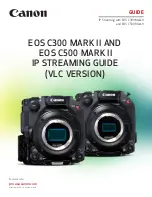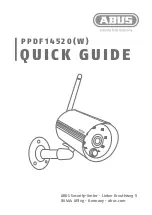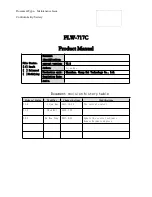
91
Taking Photographs—Exposur
e
Non- CPU Lenses
If the maximum aperture of the lens has been specifi ed using the
Non-CPU lens data
item in shooting menu (
124) when a non-CPU lens is attached, the current f/-num-
ber will be displayed in the viewfi nder and top control
panel, rounded to the nearest full stop. Otherwise the
aperture displays will show only the number of stops
(
, with maximum aperture displayed as
) and the
f/-number must be read from the lens aperture ring.
Exposure Warning
If the camera is unable to produce the correct exposure at the selected aperture, the
electronic analog exposure display (
93) in the viewfi nder will show the amount of
un der- or over-exposure and one of the fol low ing in di ca tors will be dis played in the
con trol panel and viewfi nder shutter-speed displays:
Subject too dark. Choose larger aperture (smaller f/-number) or higher
sensitivity (ISO equivalency;
48), or use optional Speedlight.
Description
Indicator
Subject too bright. Choose smaller aperture (larger f/-number) or lower
sensitivity (ISO equivalency;
48), or use optional Neutral Density (ND)
fi lter.
Aperture Lock
Aperture can be locked at the selected setting (
94).
b3—EV Step (
184)
This option controls whether changes to shutter speed and aperture are made in in cre -
ments equiv a lent to
1
/
3
EV (the default setting), ½ EV, or 1 EV.
f5—Command Dials (
202–203)
Command dials
>
Change Main / Sub
and
Command dials
>
Aperture setting
con-
trol whether aperture is assigned with the main command dial, the sub-command dial,
or the lens aperture ring. Regardless of the settings chosen, the command dials are
always used with type G lenses, the lens aperture ring with non-CPU lenses.
Summary of Contents for D2H
Page 1: ...En The Nikon Guide to Digital Photography with the DIGITAL CAMERA ...
Page 48: ...36 ...
Page 158: ...146 ...
Page 232: ...220 ...
















































